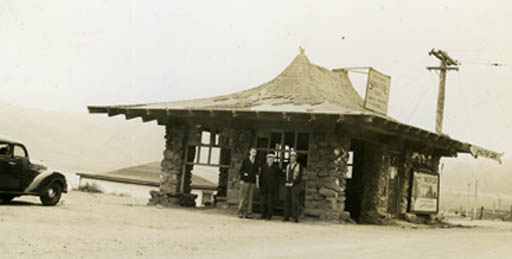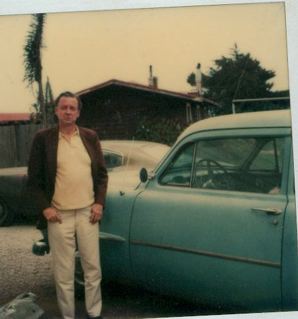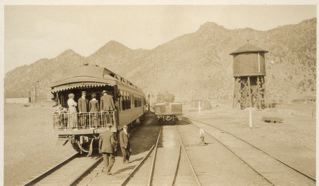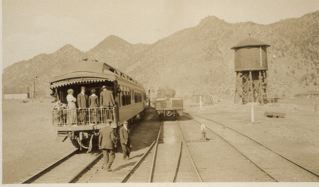A while back I posted a three-part short history of the Ocean Shore Railroad based on a 1980 interview I did with the colorful Ocean Shore Railroad historian, Randolph “Rudy” Brandt (his father had been an original investor in the Ocean Shore).
I also posted this photo, believing that it was the Ocean Shore’s observation car.
Well, now I’m not sure what it’s of…I’m honored to share this email from Ocean Shore Railroad historian John Schmale:
“Hi June. I was struck with nostalgia at seeing the photo of Old Rudy Brandt in your article on the Ocean Shore Railroad. For over 30 years I exchanged Ocean Shore RY information, photos, documents etc with Rudy. He left me all of his OS RR material. Thanks…You have a scene of an observation car and water tank which I question is Ocean Shore RR. Do you know anything about it? Sorry, I am not being critical. The car is not Ocean Shore. I was wondering if the location is identified? Maybe Leased equipment? Regards, John Schmale”
John Schmale also emailed me this photo taken in Pacifica, 1940s (see below) 
At left, “Rudy” Brandt, center, E.H. Dannman, at right, Lorin Silleman (photo, courtesy John Schmale)
Hi again June, Yes Rudy was one of the last of the old time rail fans. He
drove his old 1950’s Plymouth all night and two whole days to photograph
some rotting narrow gauge trains down in the middle of the Arizona copper
mining region. He related running into unfriendly natives, as in “Native
Americans.”…
…I was interviewed by the folks at the local Pacifica TV station regarding
the poor old Ocean Shore RR car which now lives at the Shamrock Ranch near
the South end of Linda Mar. I helped save it from getting a good bulldozing.
The car sat in a vine covered backyard 6 miles from my home in Sonoma Co.. I
have had this address for 20 years. Wow! one should get to know the
neighbors.
I found one photo, enclosed, showing Rudy on left, E.H. Dannman (Pedro
Saloon man) in center, and Lorin Silleman on right. Picture taken at Pedro
Station in the 1940’s…
I have really enjoyed your historical works on the Coastside and look
forward seeing to more.
Best regards, John Schmale





